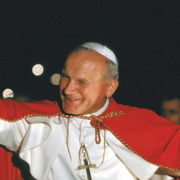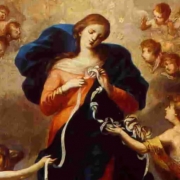Our Thoughts About Feelings by Dr. Michael Murphy
“Feelings? Yea, I try to ignore those as much as possible.”
“Feelings? You want some? I got way too many!”
“Emotions? I’m more of a rational person. I don’t give in to emotions.”
“What’s my gut reaction? I could tell you, but my reaction is wrong. I don’t trust it most of the time.”
I’ve observed all of these different reactions in therapy when discussing emotions. People have mixed sentiments about feelings, but, nonetheless, feelings we have. It’s strange how we can have an aspect of our being so essential to our survival and liveliness that we don’t fully understand. But, to be honest, I love emotions. And the ickier the better, really. Why? Because emotions don’t “just happen.” They aren’t nearly as random or fickle as they are stereotyped to be. I would argue that thoughts are much more vulnerable to sudden shifts and distortion, but I won’t digress into that.
I put the spotlight on emotions because I come from the perspective that psychological healing often involves emotional processing. Such processing involves becoming aware of one’s feelings, experiencing them with adequate fullness, remaining aware of them without becoming overwhelmed, relating those emotions to past experiences, and accepting the congruence between the emotions we feel and the circumstances from which they arise.
That’s a lot. Emotional processing in its entirety can be a complicated and halting task. And in our very busy lives we often don’t do it. It takes time and focus, and external demands may appear more urgent or important. However, with that being noted, I think our varying reactions to and lived experience of emotions also contribute to how often we sit quietly and prayerfully with our emotions. Indeed, one of the first steps to utilizing this method is getting better acquainted with how one relates with his or her emotions. Here are a few patterns of relating with emotions that I’ve noticed.
Some folks are unaware of their feelings. This very common experience can occur for a number of reasons and may not cause major problems. This is especially true when an individual has trusted others who offer them direct feedback and help them realize, for example, how sad or angry they appear. However, some individuals are not so much benignly unaware of their feelings as they are unwilling to experience them. Feeling can be rather unpleasant. You can probably relate to this – who wants to really feel how scared they are? Or how deeply sad they are? The emotion(s) we tend to resist feeling varies depending on the person. For example, many depressed individuals are aware of their sadness, and can even grow somewhat accustom to it, though they might be quite unaware of feeling angry. A narcissistic person may be aware and accustomed to feeling energized and self-confident, but may be somewhat blind to deeper feelings of inadequacy. It may go without saying, but it is difficult to process emotions that one isn’t aware of having, especially when such awareness means looking deeper into oneself or deeper into feelings that seem unacceptable. How to make it better? Ask yourself how willing you are to become aware of feelings that you really don’t want to have. Am I willing to go through the discomfort that emerging emotions could cause? In addition, consider seeking feedback from others about what emotions they regularly perceive in you. Work on fostering bravery and seek the support of others if becoming aware of an emotion that was previously veiled becomes overwhelming.
Some folks don’t have words for their feelings. This observation comes from a range of experiences with patients. On one end of the spectrum is the person who has never talked about feelings and struggles to find the words. On the other end is the person bearing traumatic experiences from the past. Speaking in general, emotional experiences are not stored with convenient word-labels in a person’s brain. This is especially true of sharp emotional experiences, and profoundly true of traumatic experiences. Some such memories are stored in a more “raw” form as bodily sensations. In order to apply words to emotional memories, they have to be evoked and felt to some degree. If a person can do so, they can reflect on the meaning of the feeling and try to apply a word that resonates with it. When an individual experiences his feelings and integrates them with words, understanding, logic, narrative, as well as any other relevant feelings, he will attain some healing of that pain, though the work may have only begun.
It is important to note that every human being acquires some painful emotional memories through the course of life. Emotional processing is likely to help such a person obtain healing and closure. However, traumatic memories are qualitatively different. Deliberately attempting to re-experience such memories without sufficient knowledge of trauma or without professional help is unwise and may do more harm than good. At times, such attempts may re-traumatize the person, which is counter-productive to the healing process. Traumatic experiences can include physical, emotional, or sexual abuse, car accidents, close encounters with death, abortion, as well as many other examples. How to make it better? First, understand that traumatic memories and related emotions are not to be trifled with. Seek professional help and the comfort of trusted loved ones if these emerge. Second, for emotions that are merely unpleasant, uncomfortable, or unwanted, sit quietly or prayerfully with them for a time. Allow yourself the space to feel them. Do not get in a hurry to move on (notice such feelings too if they arise. You may need to sit prayerfully with those as well). Then, attempt to give that feeling a word or label. It’s okay to think about your feelings (that is part of the point) once you are feeling them adequately. It is also okay to step back from strong feelings if you don’t feel you are ready to explore further.
Some folks get overwhelmed by their feelings. Here are a couple of concepts that often get confused or used interchangeably. Coping capacity is the general measure of how much stress and emotion a person can tolerate without getting overwhelmed. Coping capacity varies from person to person. However, no degree of coping capacity makes one completely immune to being overwhelmed at times by the circumstances of one’s life. Coping strategies (or coping methods) are distinct from one’s coping capacity – these strategies are what one does either consciously or unconsciously to address or react to stress and emotion. Coping strategies are not created equal (e.g. drinking alcohol to cover up unwanted feelings is less healthy than prayerfully journaling about unwanted feelings). Individuals get overwhelmed when their coping capacity is exceeded by stress and emotion. Being overwhelmed by feelings manifests differently depending on the person. Some show outward signs, start to cry, ask for help, and become less functional, while others appear stoic, begin to over-function, and use internal coping strategies to push unwanted emotions away. Therapy offers the chance to increase one’s coping capacity and learn healthier coping strategies.
Being overwhelmed by feelings is something we all have experienced, and being overwhelmed from time to time is just a part of life. But how frequently do we find ourselves in such a state, and when does it become problematic? Is feeling overwhelmed for 10 minutes, once a week normal? What if you have to admit feeling overwhelmed every day? These are very difficult questions to answer, but two scenarios seem to be dangerous in particular: being chronically overwhelmed (more than that individual can handle, over time) and being dramatically overwhelmed (so struck by the intensity of a situation that our emergency survival systems have to take over). We are capable of overcoming both, but both should be taken seriously. How to make it better? Do yourself the kindness Christ would by not ignoring either of the two dangerous situations when they apply to you. Consider seeking therapy, talking to your family doctor, or attending a support group for trauma.
Some folks feel numb. Emotional numbness is an experience often following intense and chronic emotional pain that isn’t (or can’t be) adequately addressed by the person’s current coping capacity. In most cases, numbness is a protective callous formed to protect a person from feeling more pain that he can’t escape or address. Unfortunately, while such a coping strategy can anesthetize someone to emotional pain, it also affects one’s ability to experience joy and other positive emotions. Some experience this numbness as highly unpleasant and life-deadening. Others experience numbness as a better alternative to the pain that caused it and may have mixed feelings about healing it.
How to make it better? Numbness can be a sign of significant pain or suffering in a person’s life and is generally a more extreme coping strategy. Bring compassionate understanding to the reality of numbness. Sometimes being cut off from certain feelings is something our psychology does to protect us. This helps us survive, albeit temporarily. However, folks that experience ongoing numbness should consider seeking professional help to address not only the numbness itself but also the pain that lies beneath.
Whatever the emotions we have, they are there to help us. That’s why I like the icky ones too. They are a chance to understand ourselves in a deeper way and to grow in our capacity to empathize and love others. When we grow to understand our anger, we can start to empathize with Christ as he flipped the tables of the money changers. When we grow to admit to and understand our bitterness towards those that hurt us, we can marvel at the mercy of Christ, dying on the cross for our sins. There is much truth and hope in emotions, especially when we bring those emotions to God and our loved ones and share them with vulnerability.





